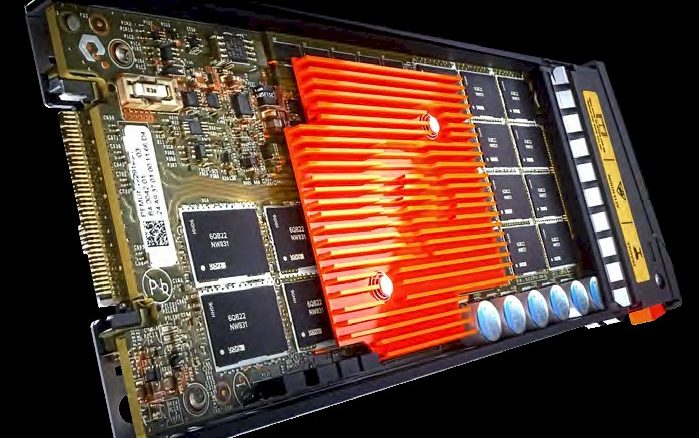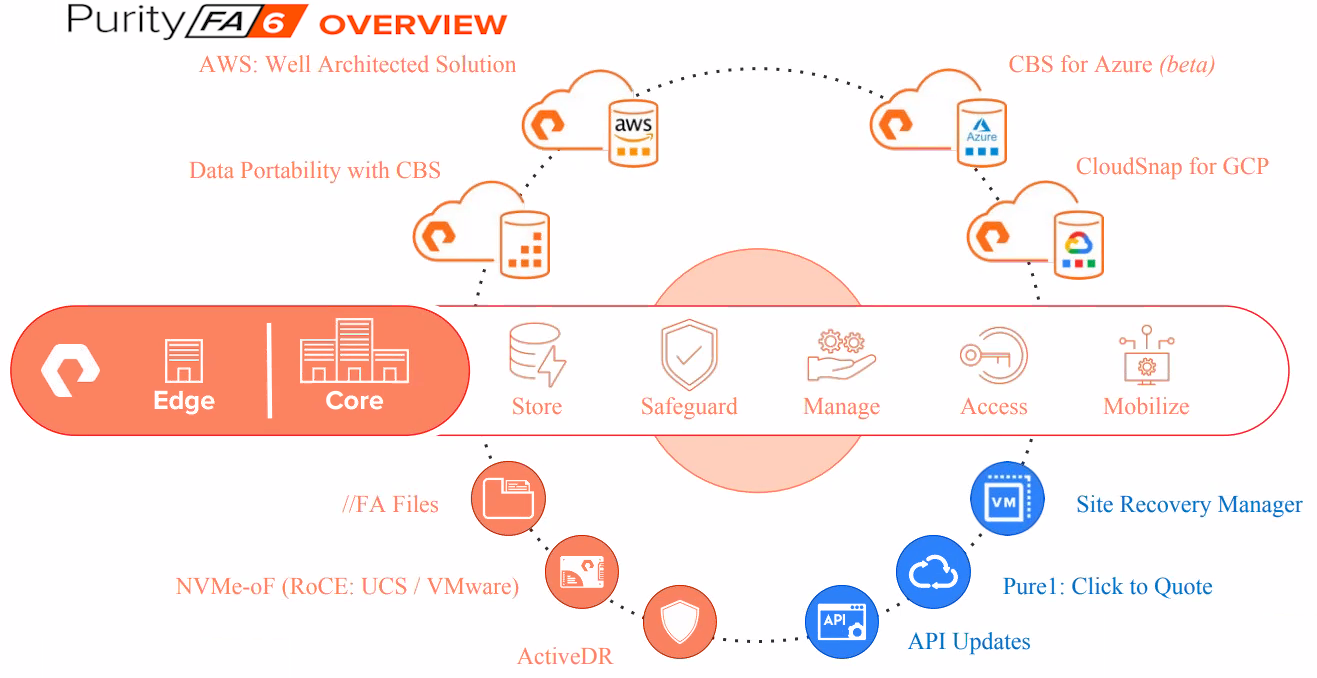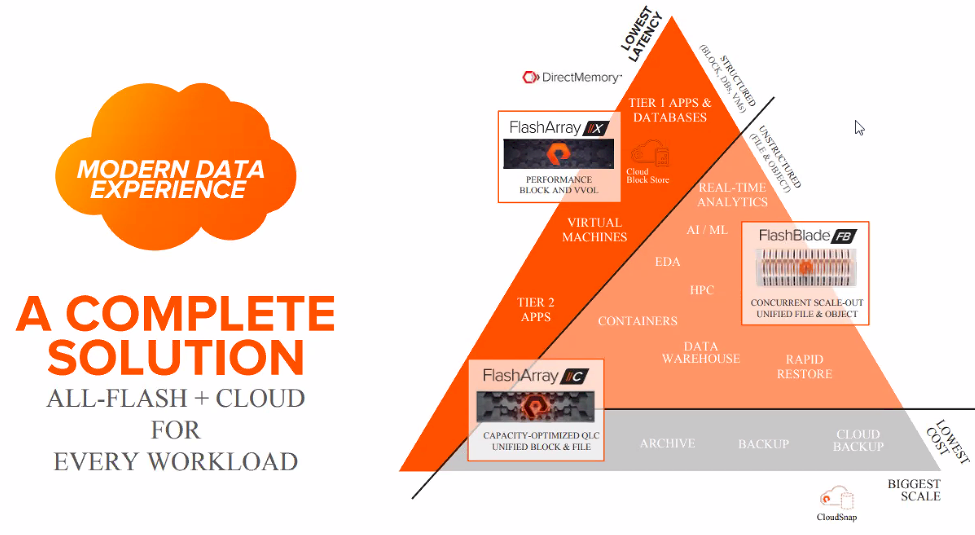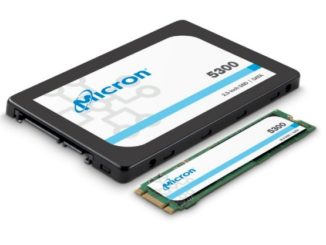
Every IT supplier has cloudy envy. And not just because utility-style pricing has become normalized by the big public clouds, but because they want to have a more regular, annuity-like revenue stream rather than always chasing the next deal.
But don’t take that too far. Most large enterprises want to benefits of the cloud in terms of elasticity and pricing, but they also want to familiar experience of an appliance that you just drop in and use. When it comes to storage, enterprises want it to be easy to manage and scale, less complex, and more cost-efficient so that they can focus on the data on the storage and turn it into information rather than managing the storage itself. And, as it turns out, sometimes they want the same storage experience in the cloud as they have on premises – or as close to the same as they can get it.
Pure Storage has juggled all of these demands pretty well, even as the world has gotten more challenging. The global COVID-19 pandemic and the resulting economic fallout has only accelerated the demand for a more cloud-like experience as businesses have temporarily closed their doors and sent employees to work from home. That can be seen in the first-quarter numbers for datacenter spending: expenditures for public cloud services providers grew sharply as they sprinted to keep up with demand. According to the Dell’Oro Group, the top ten cloud service providers – such as Amazon Web Services, Microsoft Azure, and Google Cloud – spent $15.4 billion on their datacenters in the first three months of the year, a 15 percent year-over-year jump, driven in large part by stay-at-home orders issued by state governments due to the coronavirus outbreak. However, the analysts expect enterprise datacenter capital expenditures to fall by double digits this year.
“The current environment and the economy uncertainty right now is that customers have to do more with what they have and do more with less in general,” James Gallegos, product management lead for Pure Storage’s Purity 6.0, the latest version of the all-flash storage company’s operating system that was unveiled June 10, tells The Next Platform. “A lot of the changes that we’re experiencing are going to be permanent in nature, so being able to meet those demands and then build upon those demands and the further innovation while doing the same thing is pretty important.”
As we discussed in some depth earlier this year, since launching its first products in 2011 with the FlashArray//M block storage, Pure has innovated on its flash storage appliances and software to make it easier and less expensive for enterprise to embrace, with hopes of chipping away at disk storage, which is still a significantly larger market. At the end of its last fiscal year 2020 in January, the company had $1.64 billion in revenue and more than 7,500 customers. A look at its most recent quarter showed how the company’s focus on simplifying its offerings and pushing ahead with efforts to create a cloud-like experience paid dividends as the growing public health crisis swept across the globe.
The company saw its subscription services revenue jump 37 percent year-over-year while interest in its Pure-as-a-Service offering – a multicloud consumption model that the company began offering for free for the first three months to new customers with a 12-month contract for 50 tebibytes (TiB) or more – continued to increase.
“In the near term, there’s been a move towards what I would call a service-consumption experience in storage,” Prakash Darji, general manager of Pure’s FlashArray business unit, tells The Next Platform. “It’s the modern-age experience, where people want what they want, they want it to work [and] they don’t want to worry about it. It’s kind of the consumerization of IT. Previously you would have to go to different products or different portfolios or different things to get different capabilities. … We introduced what we would call plug-and-play, the simple version of storage. You don’t have all this complexity, you don’t have all this tuning required that tune for your workload or tune for performance or all of these bumps that historically exist to get things done. What’s going on in the world today is people don’t have the patience for it.”
Pure’s customer base is broad, from automakers like Toyota and Mercedes to tech companies like ServiceNow and Core Scientific to healthcare providers like Lafayette General Hospital in Louisiana and Children’s of Alabama. Interest in the service model started with customers such as software-as-a-service (SaaS) firms, high tech organizations and managed service providers (MSPs), but accelerated with other segments during the first quarter, Darji says.
“What will be interesting to watch is startups,” Gallegos says “I’m very interested in how startups decide to build out their IT infrastructure. Subscription models are going to lend very kindly to being able to quickly adapt to the growth of startups and be able to not only meet demand the demand, but provide them the cash flow that they need. It’s just an expansion of what we were doing. The whole Evergreen [subscription-based] business model was to ensure your hardware, even on premises, never got dated. We’re now expanding that to the entire broad consumption experience as well, to say, ‘This was more of a service-oriented way of consuming hardware.’ Now we’re expanding the entire operations to the modern-day experience, which is a way of consuming storage as a service.”
The new Purity 6.0 for FlashArray operating system builds on what Pure can offer, with new features available to customers via the Evergreen subscription model with no additional licenses or support costs. Among the key enhancements is unified protocol support in FlashArray with NFS and SMB, offering file and block storage capabilities on the same system. Rather than layering file onto a block system as a gateway, Pure is natively embedding it into the core engine, giving organizations directory-level snapshots, retention policies and global deduplication across the entire block and files, with an identical UI, API and management experience.
“Every vendor has file at this point and everybody has a unified platform of this point,” Gallegos says. “If you look at it from a high level, it’s true. This is almost like a me-too type feature, but what we decided to do is … do it the way that we see as providing customers with that better experience. Our file implementation is built in natively, so you’re not going to see weird limitations like our competitors will see that attempted at the same thing. Nor did we require it to be a separate operating system or a separate gateway or a separate layer to manage. It’s actually built in natively.”
The company also is adding a continuous active-passive replication feature to ensure business resiliency without having to adopt third-party disaster recovery software. ActiveDR provides enterprises with a near-zero recovery point objective (RPO) and being able to run two physical instances of Purity anywhere in the world, without distance being a factor. By comparison, with snapshot-based synchronous replication, ActiveCluster requires a roundtrip latency to 11 milliseconds, Gallegos says. The Purity platform supports both.
The distance issue is important because with ActiveDR, companies can now deploy over longer distances, which changes how they can operate, Darji says.
“Previously you had to consider, ‘OK, between these two sites I can only do this and between these two sites, I can do that,’” he says. “It still comes back to this idea of, ‘I just want it to work and I just need capability that works, how I want it to work.’ We’re seeing increasingly people starting to create their infrastructure like a service SLA experience and in a service SLA experience, you don’t want something that becomes dated. You don’t want your hardware to age. Our Evergreen model supports that. You want your capability to be constantly updating and evolving and with this new capability we’re introducing, customers will just get it. It’s part of their subscription innovation.”
The new file and block and ActiveDR feature are among a range of new capabilities Pure is introducing in Purity 6.0, which will help build out what the vendor can offer enterprises through not only FlashArray but also FlashBlade, which companies with heftier workloads like big data and machine learning will use. FlashArray//X can manage applications likes SAP HANA or Oracle SQL Server while FlashArray//C – introduced last year – now gives enterprises and smaller companies a QLC-optimized system that supports unified block and file for such job as data retention and long-lived backups.
“Pure’s portfolio has been expanding to cover the broad range of all storage use cases that people need,” Gallegos says. “Previously you would have to say, ‘What is the widget I need to use for the purpose-built thing?’ Behind the service experience, that unifies on premises and public cloud. You can now just think of this storage service by saying. ‘I have the capabilities I need. I have the protocol access I need, I have the data protection I need. And I don’t need to worry about these refresh cycles or licensing extortion or any of these different things.’ Evergreen keeps you current, our data protection capabilities with Active Cluster and Active DR modernize our data protection. By adding file services, we’re providing expanded standard protocol support. And by going ahead and ensuring that we have cloud capabilities and portability with our Cloud Block Score, we allow you to deploy wherever you need.”







Be the first to comment